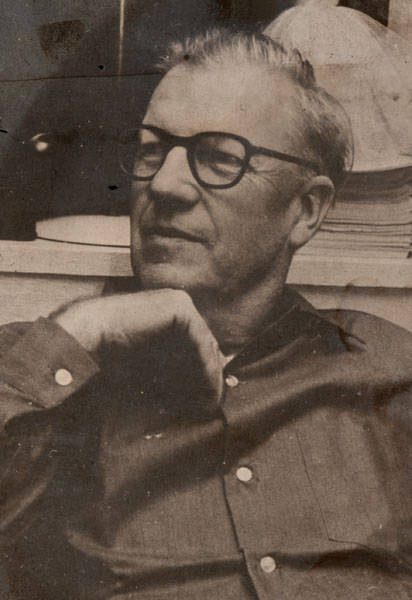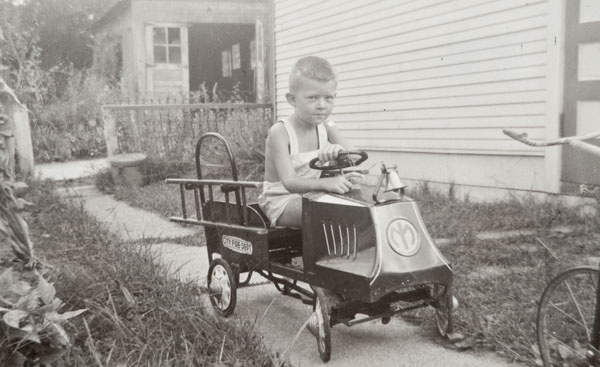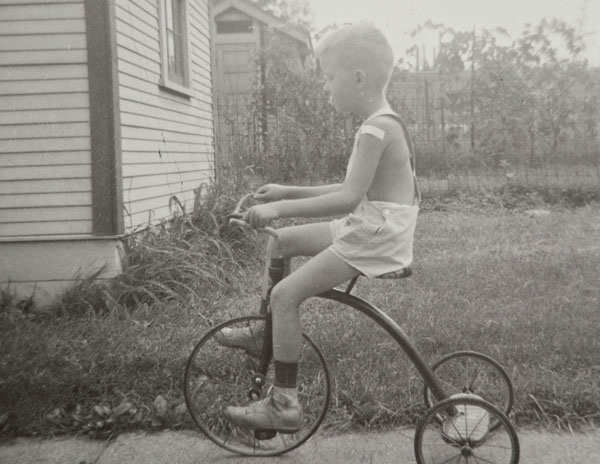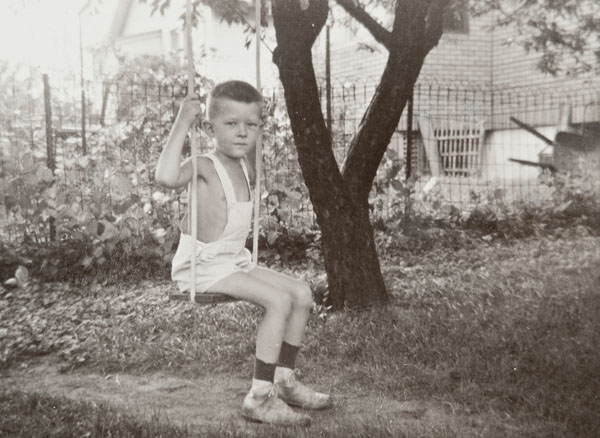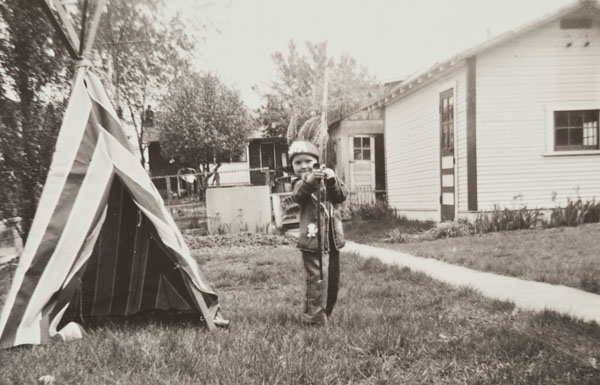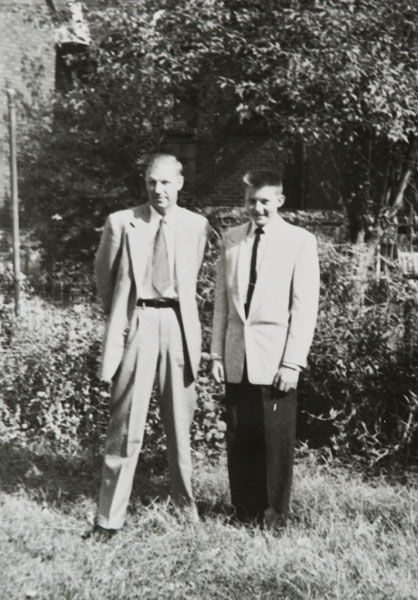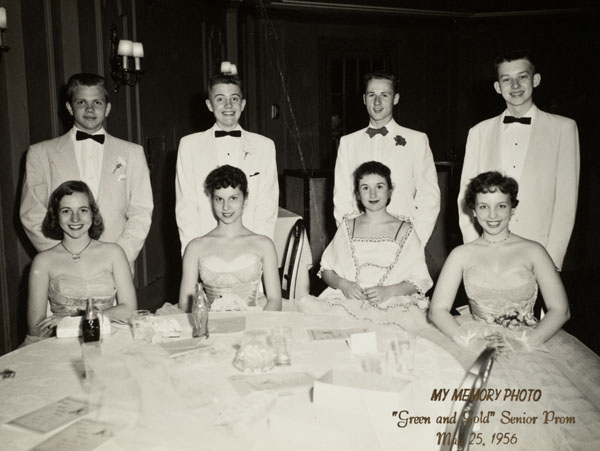Robert Neville: Personal Autobiography: Childhood
Part 2: Childhood
My parents both worked at the St. Louis plant of the Monsanto Chemical Company in the mid-1930s, which is where they met. Dad was a research chemist working on things such as oil additives for cars and, during the Second World War, for tanks and other armored vehicles. His work in the industrial war effort kept him out of the draft. He had gone to Westminster College in Fulton, Missouri, about fifty miles north of Eldon, his home town. Grandpa Neville had gone there for a two year degree in the class of 1898, so the family lore goes. Dad graduated with a B.S. in 1930; figure 17 is his graduation picture.
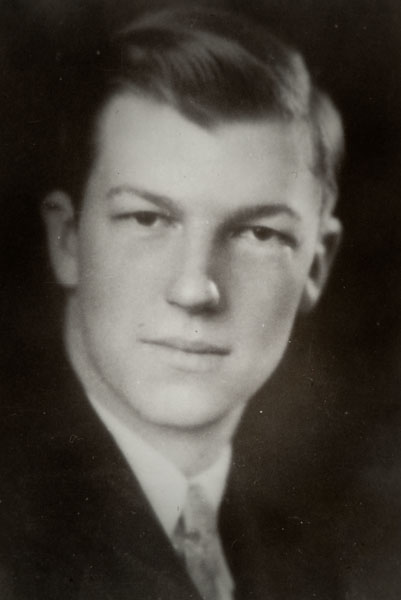
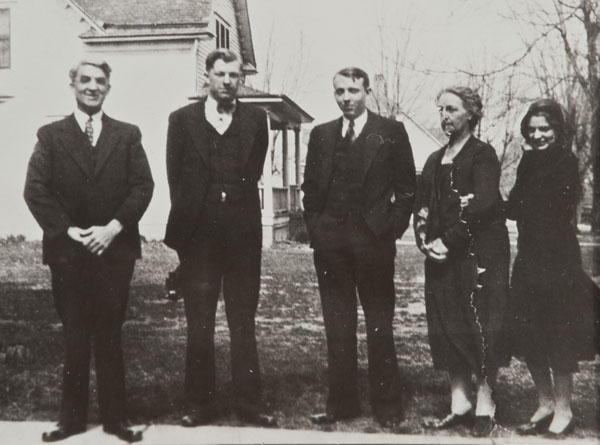
My mother went to work right out of high school in a dime store in Alton, Illinois, across the Mississippi from St. Louis. Originally a cashier, she became the company bookkeeper by default and was expert enough in that to get a job at Monsanto where she worked until just before I was born. Around 1952 she returned to Monsanto where she worked until she retired, together with my father, when she was 57. Unlike Dad, Mom loved her work and derived energy from doing the jobs of two or three people. She always felt under-educated compared with Dad but was just as intelligent and more entrepreneurial. While my brother and I were too young to be left at home, she started her own business making Masonite puzzles for small children. She had an industrial jigsaw in the basement of our house and paint sprayers in the garage. She also for a time ran a hobby shop near our house where she sold unpainted figurines and conducted painting classes, the “Off Hour Shop.” Neither of those businesses made money, but they were something she felt fulfilled in doing. When she returned to a regular job at Monsanto, the money was much better, even if it did not provide her with an outlet for her entrepreneurial ambitions. From her I inherited the dean gene.
My parents lived in a small apartment when I was born. See figures 19, 20, 21. But my crying disturbed the neighbors and so they rented a small house on Scanlon Avenue, the third house down from the top of the hill. I have only a few memories from that house, where we lived until the middle of my kindergarten year. Figure 22 shows me in a photo-portaitist’s idealized form, elven-eared and with gobs of “Stay-Combed” plastering my hair. In figure 23 my hair is in its usual state and I have discovered long-distance contemplation. The house was small but it had a piano that my mother played; my parents used to have “neighborhood sing-alongs” that justified me in staying up late.
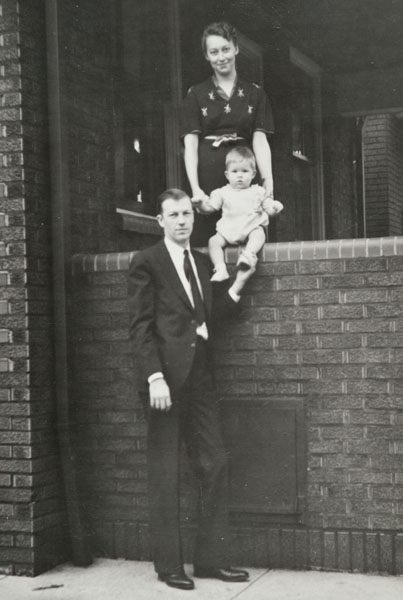
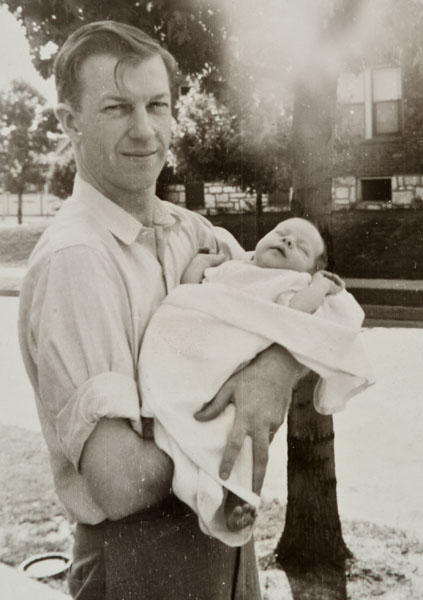
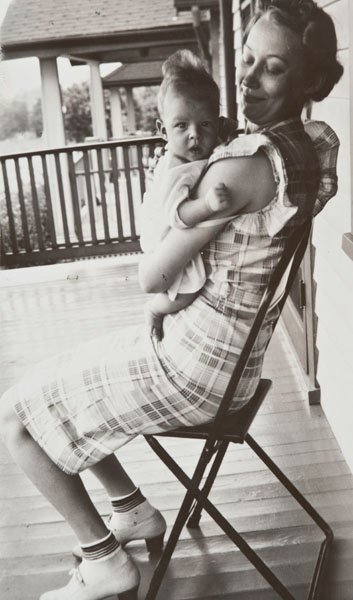
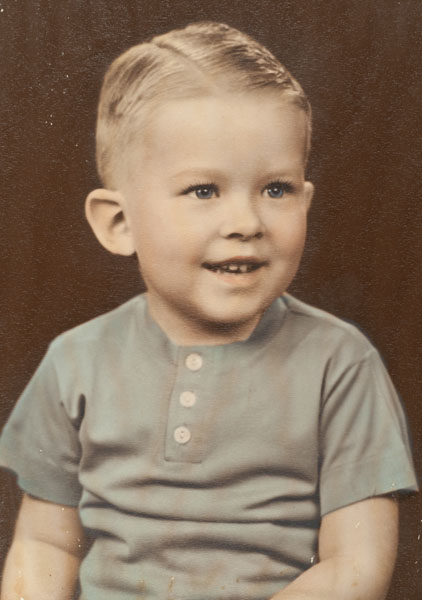
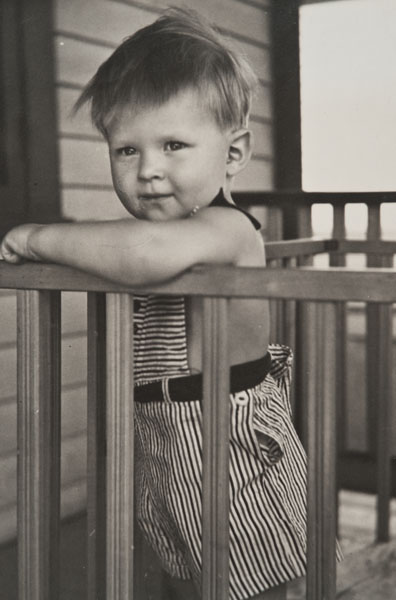
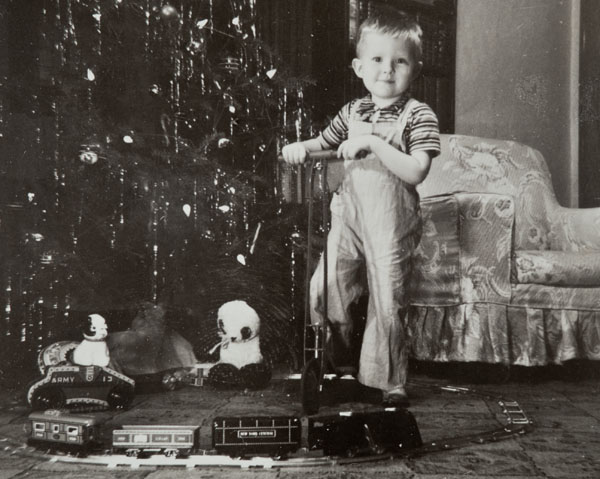
Milk was delivered to the house by a horse-drawn milk-wagon. But a motorized garbage truck hauled away the trash down the alley behind the house. My first professional ambition was to be a sanitation engineer, in pursuit of which I followed the garbage truck with my coaster wagon picking up “gleanings” that I brought home. My mother guided me into other professional directions. My parents must have thought that I liked motion and travel (see figures 31-33).
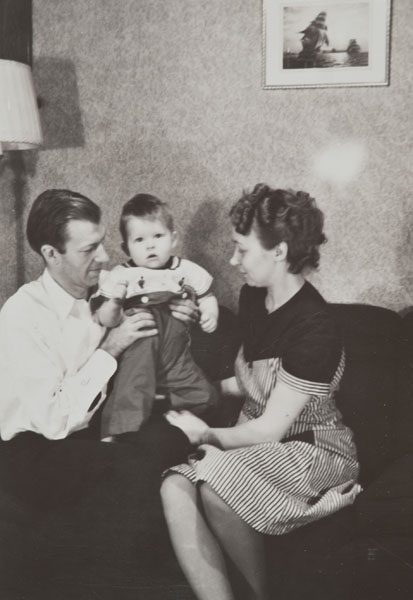
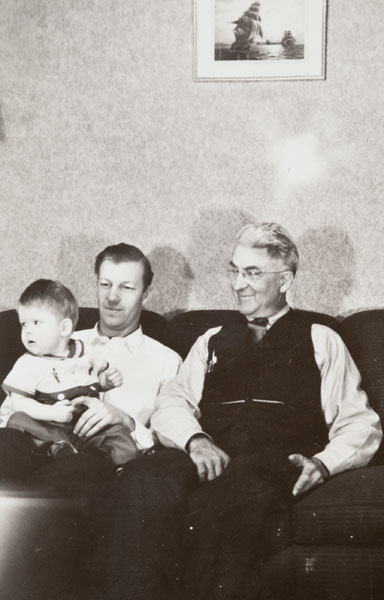
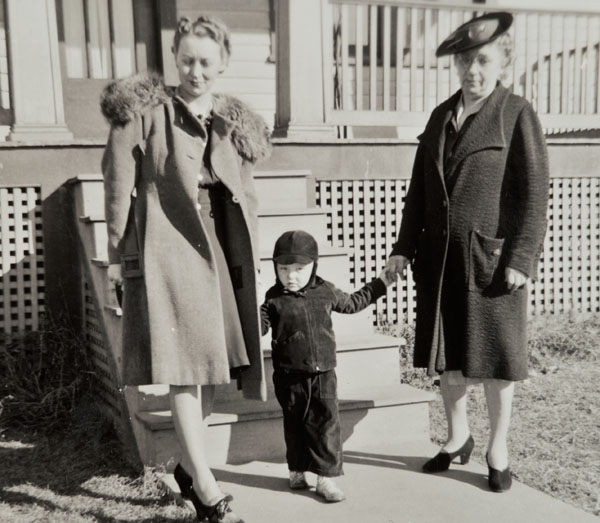
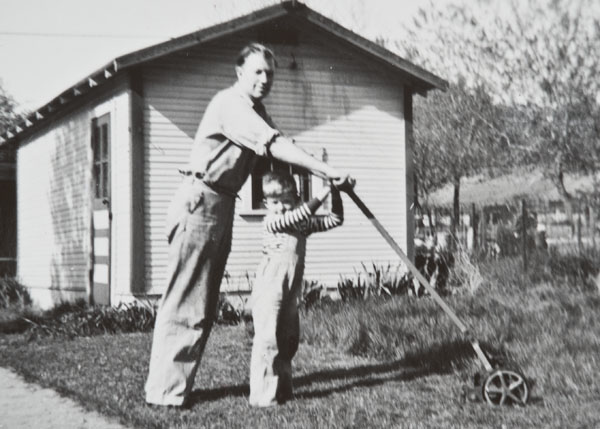
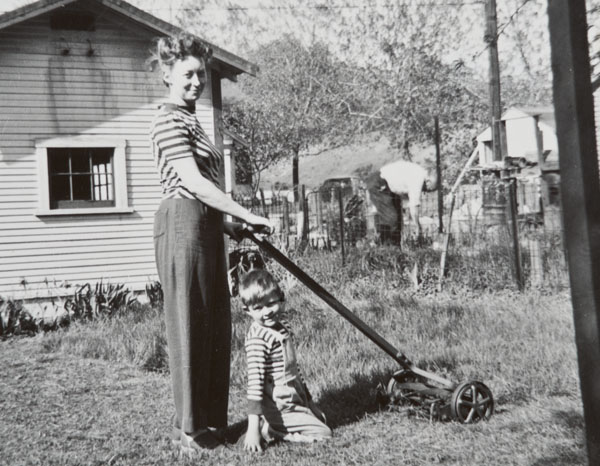
Note the bandage on my shoulder covering my smallpox vaccination in figures 31 and 32; it actually made me quite sick. Ever concerned to teach evenhandedness, my parents taught me the Indian side (figure 34) as well as the cowboy side (figure 35).
The United States being at war in those days affected everything. Playing soldier was a major activity then and for several years after the war ended (figures 36 and 37).

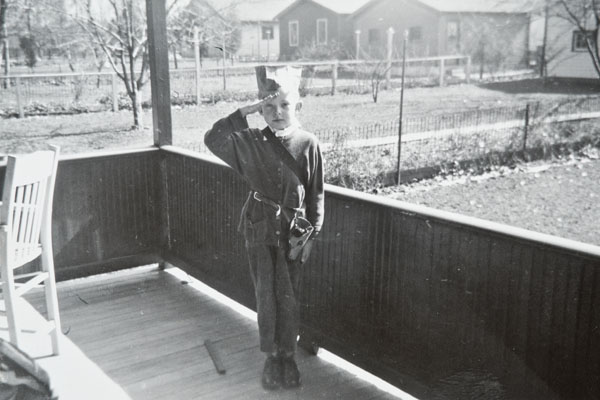
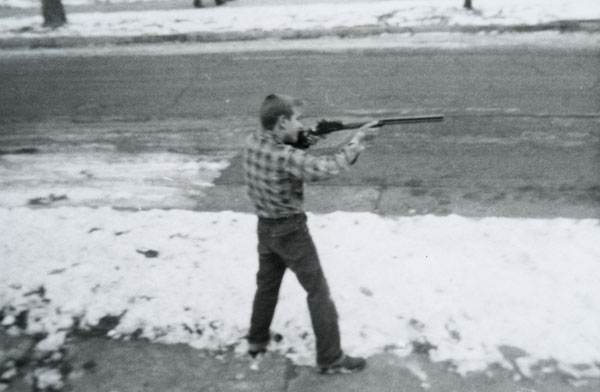
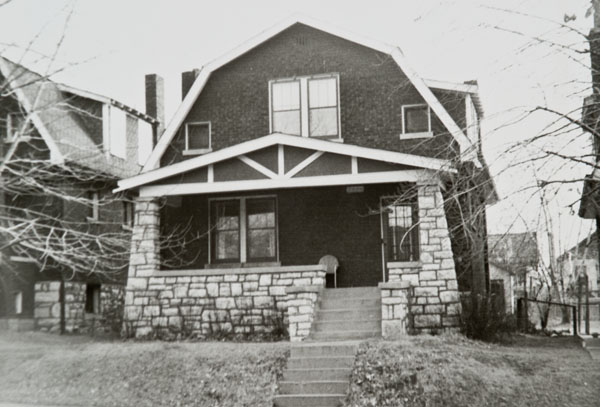
Throughout grade school I had many adventures with my classmates, and those in the higher and lower classes with which we met alternate semesters. Figure 40 documents one such, a radio quiz program with Raymond Shepherd and Richard Gephardt who remained friends through high school. Ray and I remain close to this day; Richard went on to the U.S. Congress where he was Majority or Minority Leader of the Democrats in the House for a number of years. I was also close to Lloyd Schuler through high school (figure 41). In eighth grade I was senior patrol boy (crossing guard) and developed a crush on Sana Tucker, the senior patrol girl. Figure 42 shows my grade school graduating class.
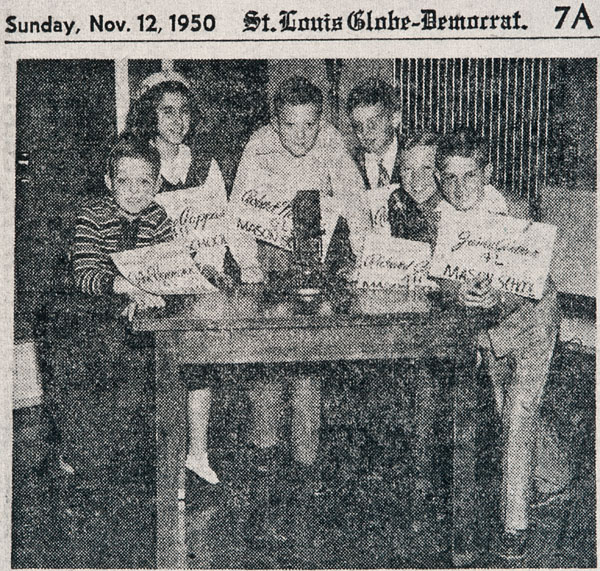
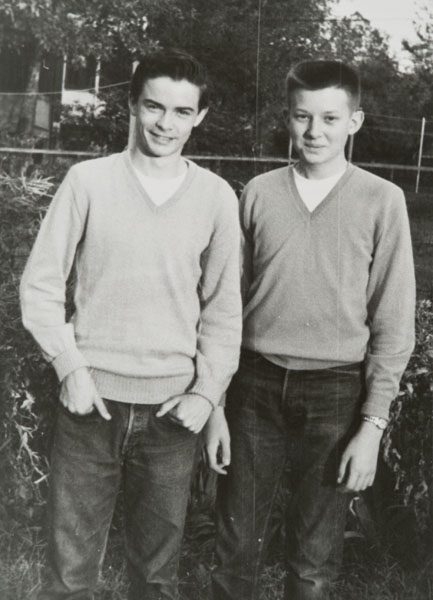
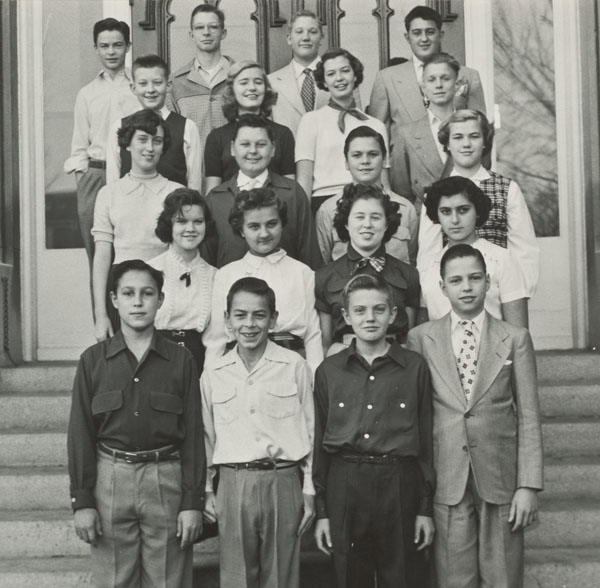
Floyd Schuler, top row left,
Me, next row left,
Sana Tucker, second row from bottom, left,
Ray Shepard, bottom row, third from left.
My brother, James Harvey Neville, was born January 25, 1945, on my father’s birthday (anniversary), which I found fascinating. How my parents managed the move to a new house and mange a new baby at the same time I can’t imagine, though I do remember my mother falling in front of the new house in the snow, carrying Jimmy and breaking her arm! The rest of my childhood was shared with Jim in all the complicated ways that brothers have. That Jim was five and a half years younger than I made a considerable difference. We were not close together in school, though many of his teachers had been mine and some put him down for failing to be “good,” like me. Physically we were always at very different stages; when I left home for college at 17, he was only 11. By the time he was six and my mother went back to work outside the home, I was frequently assigned to be his baby sitter, which was not a healthy relationship. Where I played the role of the good boy, he came more and more to play the bad boy role, the rebel. He excelled at music and made money semi-professionally playing sax with groups in high school and later, but flunked out of a number of high schools. He finally finished at a military school and after that joined the army for at least one if not two tours. Leaving the army he came to live with my wife, Beth, and me in Yonkers, N.Y., when I was teaching at Fordham; he took his own B.A. at Fordham, in philosophy no less, meanwhile marrying one of my favorite graduate students, Suzanne Niedzielski. Jim was by far the smartest person in our family, with an IQ of 150, compared with mine of 115! When Sue finished her doctorate she found a job teaching philosophy at the University of Hartford where Jim went on to get a master’s degree in musical composition (at the Hart School of Music). After several years of marriage, they divorced and, after several more years, Jim married Milda Garrett with whom he was extremely happy for twenty one years. She had five children by a previous marriage who became his children; and he loved being Grandpa to their burgeoning family. Very sadly, he died of lung cancer at the age of fifty five, having been a smoker since age eight.
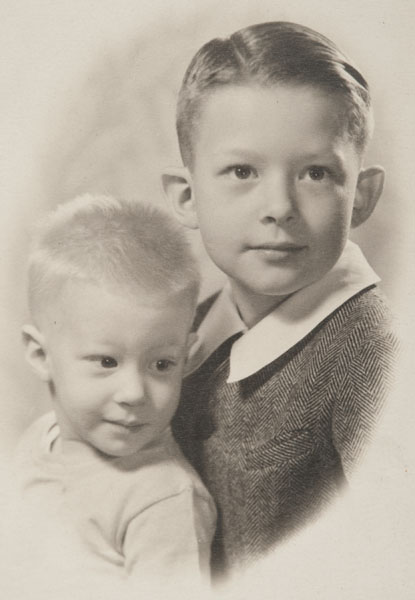
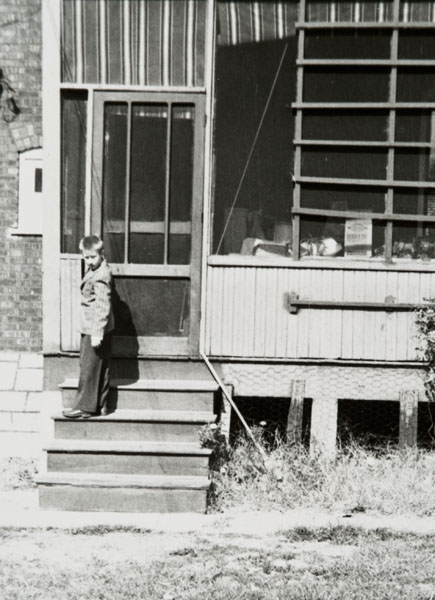
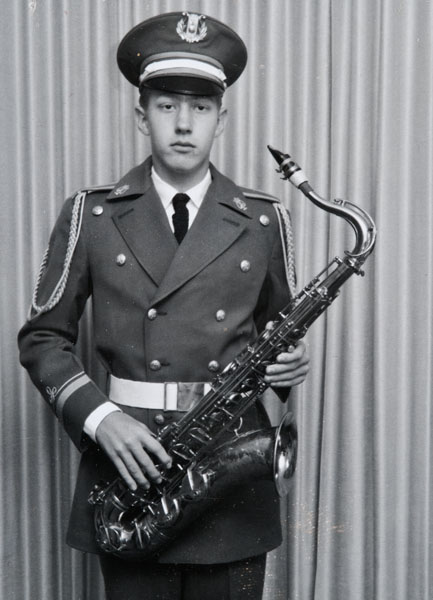
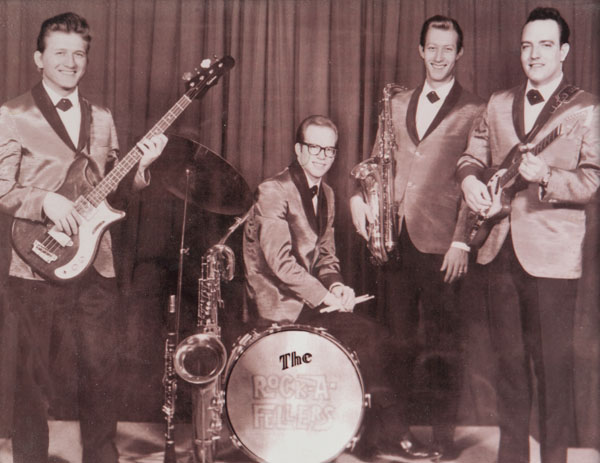
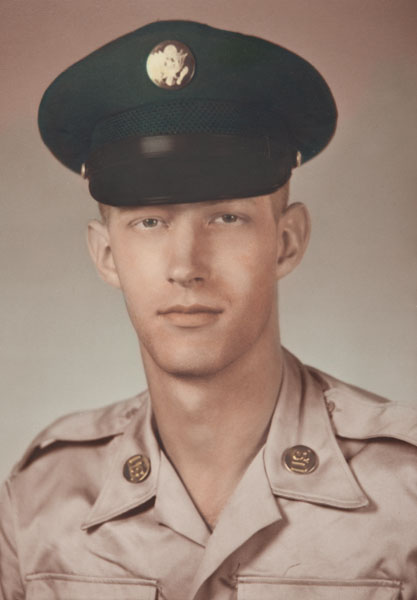
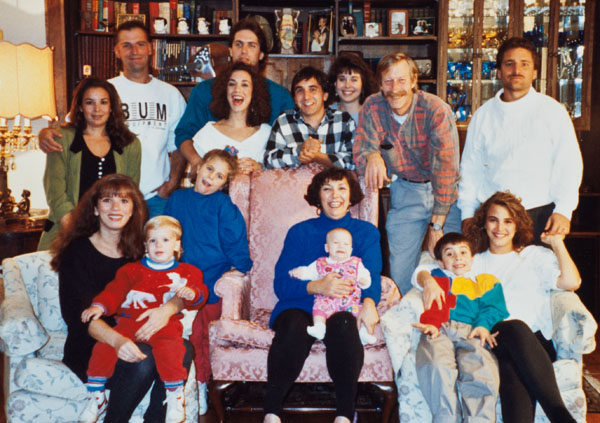
Though I myself had no musical talent, it was always a part of my life. My parents started me on the piano at age five with Mrs. Emerine Cross.

When I was nine I joined the Cub Scouts and Dick Gebhardt’s mother, Maureen, was my Den Mother. At eleven I joined the Boy Scouts, went to scout camp that summer, and advanced a rank or two.
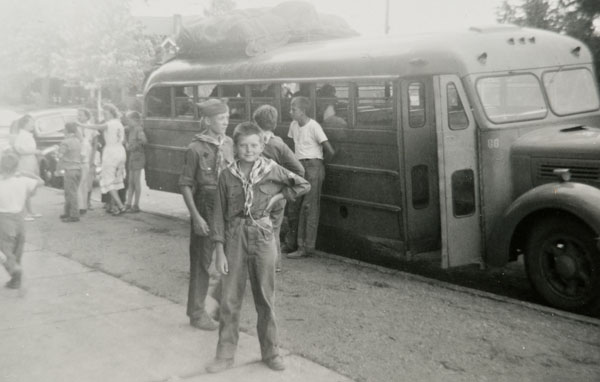
My talent in athletics was even less than in music. Nevertheless I was a devoted baseball fan. My father took me to some or all of the games of the 1944 World Series between the St. Louis Cardinals and St. Louis Browns, though I remember none of that. Later I went to many games, and saw Satchel Paige pitch, among many others. I was a good organizer, and so turned my sandlot baseball friends into a real team in a recognized league with a real coach. But I was such a poor player that I was kicked off the very team I had founded! That was a blow, especially because I lost the friends who had been on the team and were now embarrassed for me. My father dutifully taught me the rudiments of football, drawing diagrams of the positions and buying me shoulder pads. He put a basketball hoop on our garage and taught me to shoot baskets. Best of all, he played catch with me every night when he came home from work and there was never any competition there. But after losing the team, my heart was not in any of that. Because of a foot injury I was exempted from gym in high school and only later in life developed a strong sense of physical accomplishment. To this day I can barely bring myself to attend a professional baseball game, despite the fact that the Boston Red Sox are a dominant religious institution where I live. Watching football on TV is a companionable activity my wife and I share.
I grew from little boy to gangly adolescent in my grade school and high school years. Southwest High School was about 2 miles from our house and I walked in good weather and took the bus in bad. Whereas I was close to everyone in grade school, high school was huge and I had to select (or be selected by) my cliques. I was in all the choirs, operettas, and plays possible, and so hung out with the artsy crowd. I was also involved in student council, which is where I kept up my friendship with Dick Gebhardt and made many new friends. My tablemate in biology class, dissecting a frog and other animals, was Barbara Canning who brought a handkerchief saturated with perfume to tuck around my collar as I carved away; it at least complicated if not overcame the smell of formaldehyde! She was my date for the senior prom (figure 58; Ray Shepherd is second from the left, top row). Ray Shepherd remained my best friend throughout those years and we went to many cultural things throughout St. Louis as we became old enough to maneuver on our own. Several nights a week Ray and I played bridge, first with his mother and father, Tom and Mable Shepherd, and then with my parents. We became quite adroit bridge players, absorbing the strategies of both families. Tom Shepherd came from Eldon, Missouri, like my father. Their own fathers knew one another there. The story is that one of their fathers got lost in a nearby cave and the other was with the search party that found him; the family stories disagree as to which got lost and which was the rescuer. Ray and I are content not to pursue the issue, although surely there must be newspaper records that would resolve it.

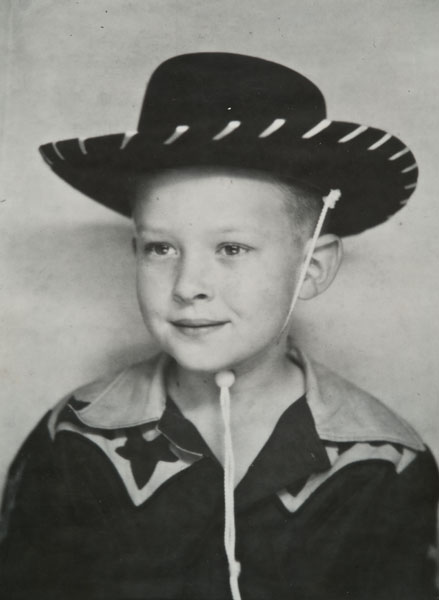
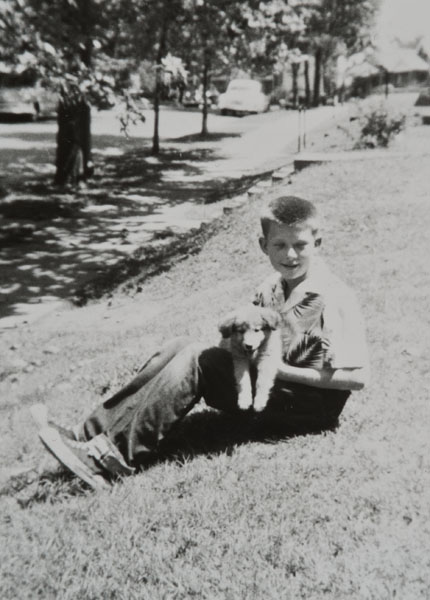
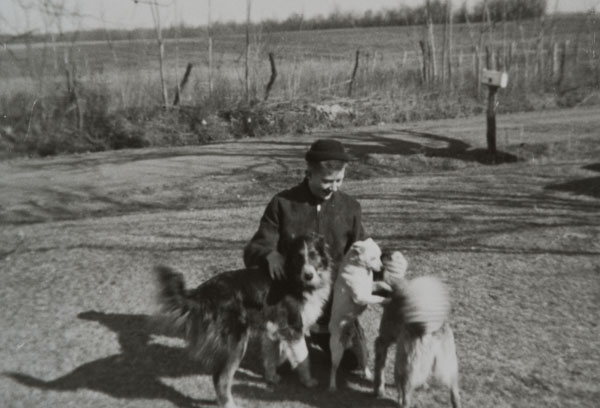
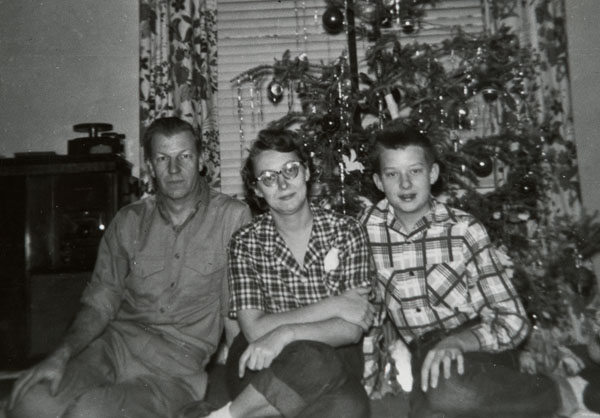
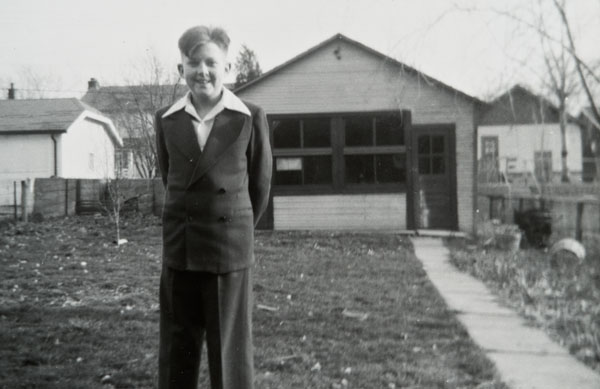
While I was in high school, the desegregation ruling came down and St. Louis demolished the “Negro” high school in the system. All students were then to go to the high school in their geographic area; but there were no African Americans in my district at all, housing segregation being what it was. So I never went to school with African Americans until college, when there were three in my class of nearly a thousand at Yale. Nor were there many Jews in my high school, so far as I knew. Both Mason School and Southwest High School were on the edge of the Italian neighborhood, “The Hill,” and so there were many Roman Catholics. We Protestants had a sense of being a minority, though not a small one. Though I did not know it at the time, Southwest was not a prepossessing intellectual place. Hardly any graduate left the state to go to college; Washington University and St. Louis University were fine enough for the better students. Dick Gebhardt’s older brother Donald graduated the year before I and went to Drake University in Iowa. One of my classmates went to Dartmouth. But there was virtually no experience in the School of sending people away to the prestige colleges and universities. I graduated first in my class by .044 points; the second in the class became a math teacher and subsequently gave my brother, Jim, a hard time when he was her student, probably because he deserved it but also, I’ve always suspected, to get a bit of revenge.
High School was more important for me than church, but not by much. Although my father was an atheist, he believed that being raised in church was important for moral education. So my family attended Dr. Fry Memorial Methodist Church from the time we moved to Marmaduke Avenue. My father was on the official board, sang in the choir, and taught the adult Bible class for many years. I grew up in Sunday School and the Methodist Youth Fellowship. My parents had me baptized when I was nine, and I remember the minister, Elmer Brown, putting his hand on my head crushing the crust of Stay-Combed with which my mother had tamed my hair. When I was fourteen or so, our youth group went on a retreat with several other groups and I then felt strongly called to ministry. I announced this at the next Sunday service when I had been asked to give a report to the congregation on the retreat. Since I had not mentioned this call to my parents, they were somewhat shocked by this public profession of a ministerial calling, however superior it was to garbage collecting in their eyes. But I went on to become a local preacher in the Methodist Church when I was fifteen and served a summer parish at Kingdom House in downtown St. Louis when I was seventeen before heading off to college. The ministers at Fry Church recognized the importance of my interest in religion, particularly Rev. Raymond Sturgis, who had married my parents. I was made editor of the church newsletter and performed many other chores around the church, spending a lot of time with Rev. Sturgis. Equally important to me, however, was Helen Baldwin who was leader of the youth group and teacher of my Sunday School class. She had an uncanny way of combining theology and spiritual piety, all with a rigorous intellectual focus. Ray Shepherd and I grew together as friends and as intellects under her tutelage more than from any influence at high school. I think Helen was the first woman I ever loved, despite the ten year difference in our ages. Helen was a teacher, beginning at Mason School but going on to be a principal and then School Superintendent in Jacksonville, Illinois, where she still lives a vigorous life.
When I first got to college at age seventeen, the shock was so great that I believed for a long time that I had received no culture at all growing up. In high school I had written only two papers, each on one side of the same sheet. But in retrospect that was a vastly mistaken judgment. My father made sure that he took me to the opera, the symphony, and plays when I was old enough to understand.
